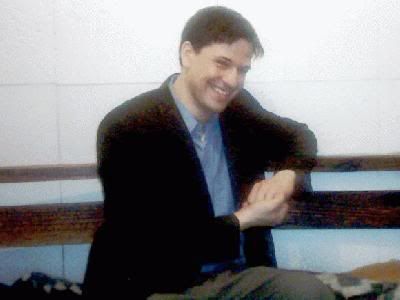
Measures have different dimensions with reference to the human body. Fingers can use pencils, rulers or scissors, but some elements, of digital products, need pincers or tweezers to operate it. Other elements (a theme of nanotechnologies) need microscopes. At the other end of the scale our hands open boxes, our arms raise objects, our legs walk streets, into a constant experience. Our cars, our ships, our planes, our spaceships transport our body to different scales. Into this range, there are significant attempts of measure and universal proportion through the history (The Modulor, Le Corbusier, previous image)

 The cell, the city, they have ranges in its structures, proportions, measures, relations. In the middle of the spectrum appear the human figure, and its distance of sensory control.
The cell, the city, they have ranges in its structures, proportions, measures, relations. In the middle of the spectrum appear the human figure, and its distance of sensory control.
Great part of the spectrum is unknown, then the human scale is the most real dimension.
The domains of architecture
Into this spectrum there are different sensory experiences. First, the near objects: around the length of control of our bodies.
Beyond these objects, appear our angle of vision and places of human settlements. Finally, the measurable territories (Valparaíso: the street, the neighbor, the city). The architecture is definitively marked by the human movement, and the human need of protection, of cover. Then it is possible to think about an architecture to survive. The survival endeavor like generation or one of the principles of constructing.
Nanotechnology and radars
Beyond this range or parameter, there are other orders. Indefinite for our comprehension, with minimal measures. Nanotechnology is the study of the controlling of matter on an atomic and molecular scale. Generally nanotechnology deals with structures sized between 1 to 100 nanometer in at least one dimension, and involves developing materials within that size. http://en.wikipedia.org/wiki/Nanotechnology
In the borders of the major scale, a new indetermination appears. From the space, we can see the cities, and its orders, but the rest of the universe is vast, immeasurable. We look for answers with radars, listening sounds, trying to measure in the indetermination.
The Modulor: a tool of measure
Le Corbusier proposes a link, a way of calibrating scales, through anthropometries: to recover the scale of the arm, of the leg.
Without measures the human body does not find support or sustenance, a moment of rest, intervals of pause.
In architecture the application of the golden section tries to reach the integration of the whole scope of a design, from the site to the details. Le Corbusier, an Architect, develops two sequences of measurements ("blue" and "red" sequence) through "Le Modulor". He takes the - assumed -average size of a human, and subdivides and expands it, closely based on the golden section relationship. In the sequel to "Le Modulor", "Modulor 2", Le Corbusier describes how after development of the measurements he applied them in designs.
This scheme, usually in connection with an abstracted human, raising one arm to the 226 cm low ceiling, can be found on some of the buildings that Le Corbusier designed, for example on the Unité d'habitation in Berlin, and the units in Nantes-Rezé and Marseilles, France. The culmination is probably the hand-dove of peace, in Chandigarh, India, turning part of the icon of the Modulor into a monument of modernist hope for the achievement of human betterment through better architecture.
http://en.wikipedia.org/wiki/Modulor
Thus the Modulor is an anthropometric scale of proportions, devised by Le Corbusier (1887–1965), as a connection between two incompatible scales, the Anglo Saxon system and the Metric system. It is based on the height of an English man with his arm raised and it was used as a system of regulatory lines of Le Corbusier's buildings and was later developed into two books.
Le Corbusier developed the Modulor in the tradition of Vitruvius, Leonardo da Vinci, Leone Battista Alberti, and other attempts to discover mathematical proportions in the human body and then to use that knowledge to improve both the appearance and function of architecture. The system is based on human measurements, the golden ratio, and the Fibonacci numbers. Le Corbusier described it as a "range of harmonious measurements to suit the human scale, universally applicable to architecture and to mechanical things."
With The Modulor, Le Corbusier sought to introduce a scale of measures that would unite this incompatible systems: the Anglo Saxon foot and inch and the French Metric system. Whilst he was intrigued by ancient civilisations who used measuring systems linked to the human body: elbow (cubit), finger (digit), thumb (inch) etc, he was troubled by the metre as a measure that was a forty-millionth part of the meridian of the earth.
Prototypes: Human Scale and Environment
Into this time, thinking these themes, I have built prototypes. Between furniture and installation, or architecture, these possibilities can open multiple perspectives.
Portable module
"A book as a pavilion" is a recent idea. The first stage of this installation is a flexible book transformed into a support.

Portable module and Anthropometry
Book is a surprise. This idea is contained in pop-up cards, for example: opened windows showing the interior paper, and the implicit theme is the sheet as a constructive system.
More information:
http://vladimirbrontis.blogspot.com/2008/08/el-espesor.html
http://vladimirbrontis.blogspot.com/2008/09/arquitectura-modular-y-uso-funcional_4565.html
http://www.flickr.com/photos/29852155@N05/sets/72157606979628015/
Theatre of the World, Aldo Rossi: the object moving, creating new landscapes.
More information:
http://vladimirbrontis.blogspot.com/2009/12/obra-plastica-y-contexto_07.html
http://www.flickr.com/photos/29852155@N05/sets/72157622801472425/
Rodchenko as reference: balance through weight, crane system.
More information:
http://vladimirbrontis.blogspot.com/2010/02/el-detalle-en-arquitectura.html
The ultimate prototype is a sloping, and illuminated prism, as lantern of paper, as honoring to the poet Andrés Sabella.
More information:
http://vladimirbrontis.blogspot.com/2010/06/elemento-fisico-y-fuente-de-luz_30.html
http://www.flickr.com/photos/29852155@N05/sets/72157624554691436/


























